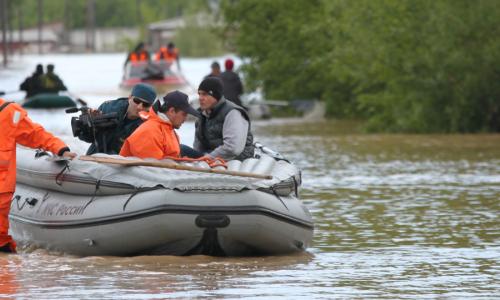Sea level rise, more frequent and severe heat waves, growing wildfire risks, and an increase in extreme weather events — these and other consequences of global warming were once largely preventable, but foot-dragging by our elected leaders and policy makers over the past two decades means that we must now confront the dangerous new reality of rising temperatures and the serious impacts that accompany them.
We must take immediate action to reduce our global warming emissions and prevent these consequences from growing more costly and severe in the future. But we must also now prepare for the unavoidable effects that have already been set in motion.

Impacts vary by region
Along the coast, residents and city planners must confront the reality of accelerating sea level rise and the growing risk of destructive coastal flooding events.
This is especially true along the U.S. East Coast and Gulf of Mexico, which are experiencing much faster rates of sea level rise than the global average. Tidal flooding is increasing throughout the region, putting communities and vital infrastructure—including many of our coastal military bases—at risk.
To prepare, we must make smart decisions today that help protect lives and coastal property, and that discourage development in high-risk flood areas.
Extreme heat events are increasing in many parts of the country, especially in the Midwest, and dangerously hot weather is expected to become more common in the decades ahead. Searing temperatures particularly increase the health risks for the young and elderly, and cities and communities must take steps today to minimize the health impacts of extreme heat.
In the Western U.S., the number of large wildfires is increasing and wildfire season is now two months longer than it was 40 years ago. Winter snowpack is melting earlier in the year in response to rising temperatures, which creates hotter, drier conditions that are primed for wildfires to ignite and spread.
Communities must prepare for these growing wildfire risks, and make smart choices that help protect lives and properties.

Precipitation patterns are changing
As the planet warms, scientists expect certain areas to receive more precipitation while others will see a decrease in annual rain and snowfall. Though the exact changes vary by location and region, as a general rule currently wet areas will get wetter and dry areas will become drier.
This trend greatly increases the risk of severe drought in certain regions, including major agricultural areas such as the U.S. Midwest, with potentially serious consequences for our food supply.
Changing precipitation patterns also have significant implications for our electricity system. Many power plants require a tremendous amount of water to operate; when there is not enough, or when water temperatures get too high, they must reduce production or shut down entirely. To minimize the risks of disruption, we must make water-smart decisions today that move the country towards low- and no-water electricity sources like renewable energy and energy efficiency.
Global warming is also increasing the number of extreme preciptitation events. Since 1958, the amount of rain or snow falling in the heaviest one percent of storms has risen nearly 20 percent, averaged nationally. This increases the risk of flooding and makes it essential that cities and communities prepare for the increased likelihood of flood events.

Toward climate resilience
Heat-trapping gases already in the atmosphere will cause additional warming — and increasing consequences — over the coming decades. To prepare, we must take steps today to build more resilient cities and communities.
To help guide decision makers in this crucial effort, UCS has developed a framework and principles for science-based adaption to help ensure that investments in climate change adaptation are scientifically sound, socially just, and fiscally sensible.
At the same time, we must quickly, and dramatically, reduce the heat-trapping emissions that drive global warming.
The choices we make today will determine how high temperatures rise, how severe and costly the consequences of global warming become, and what type of future our children will ultimately inherit. We must act now to ensure a healthy and safe planet for future generations.





